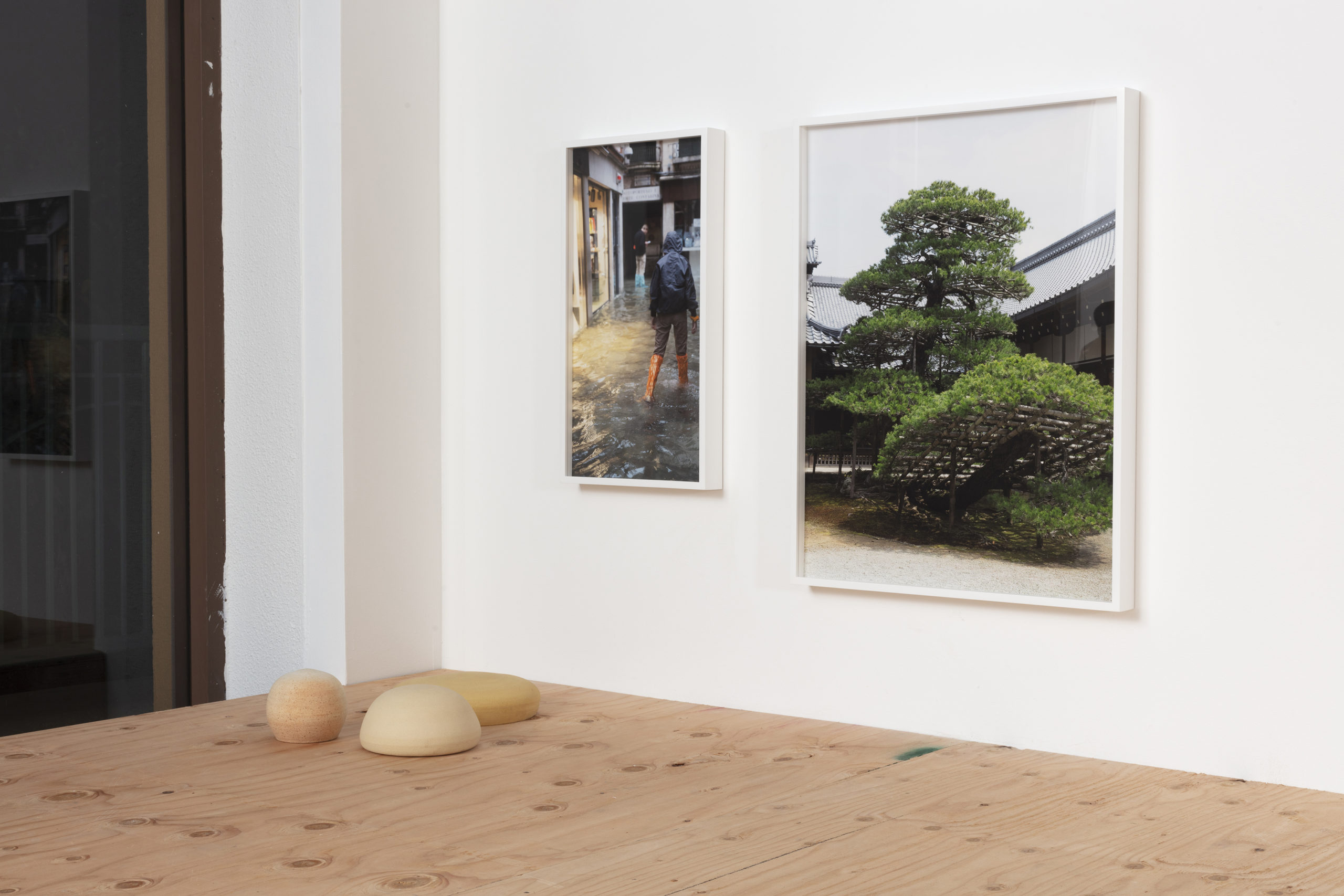
proximity detail at FOYER-LA photo by Josh Schaedel
FOYER-LA is headed into its third year of small-scale but provocative exhibitions—ranging from the first Los Angeles show for James Rose to new perspectives on Maya Deren. The current show, “Proximity,” an installation by founder Connie Walsh, explores the possibility of intimacy and community in our fragile post pandemic world.
Interview by Jane McFadden
Foyer LA has been open since 2019. Tell me a bit about the space and its goals.
I see it as an experimental exhibition space that expands the work that is happening in the studio into the community. I began by inviting in friends and colleagues from my life in the art world; the first show was quite big with eight people—artists that took a leap of faith about the space and went for it. There has been one other group show, but mostly the projects are one or two artists around a fairly abstract theme. I am interested in solo projects that activate or responds to the architecture, or that haven’t been seen prior, in something that can’t exist in a studio, and maybe needs the space. I like to think about how I might layer one project onto the next, having an artist respond to a possible residue left by another. I’ve invited outside curators, as well as writers. I often invite the artists to speak about their projects in casual discussions. I want the space to keep growing and keep shifting in its possibilities—the pandemic certainly demanded that. I also try to use the space for other kinds of activities and events—usually generated from the artist— a botanical ink dye workshop, an Ikebana workshop, a clairvoyant tarot and sound odyssey.
When I was back in Maine this past summer I visited the South Solon Meeting House built in 1842 and I was fascinated by its continual existence and that it is still being used openly and without the exchange of commerce. I want to see FOYER-LA as this kind of ‘free’ space—open to possibility and allowing for the development of a thread of thought.
So how has this project space informed your sense of community?
That’s an ongoing challenge. The issue of what constitutes a community and how it is formulated and how it is generative is of interest to me in general. Recently I was fortunate enough to be able to go back to Skowhegan a second time and I was aware of that question for myself; I was fascinated by practical and tactical mechanisms of how that community works, like how they gave us breakfast so we had to be on the same time schedule despite whatever jetlag, and so we had to start our day in proximity. We all know that collective meals encourage relationships to form, but it’s so true. I also give credit to the teachers for their incredible generosity; they exemplified such an inspiring humanity in such a challenging time (summer 2021) that you wanted to rise to the occasion and do the same; but community is definitely harder to build in a large city outside such an environment. I’ve been making art for a while, and artists often complain about the system. Many artists are trying to offer different ways to interface with art and I am interested in that as well.
Certainly, the intensity of Skowhegan partially comes from the commonality of the chosen path as artists. To me so much of that experience was about the gift of time—to commit, to slow down, to open up, to share, and to exchange. Yet it isn’t isolated unencumbered time; it is the people (artists) bumping up against one another—each engaged, each finding their way. I keep thinking about the word potentiality. Somehow my time there, both last summer and 25 years ago, allowed me to feel a part of something larger than myself. I think this drives my interest in the space and in my work.
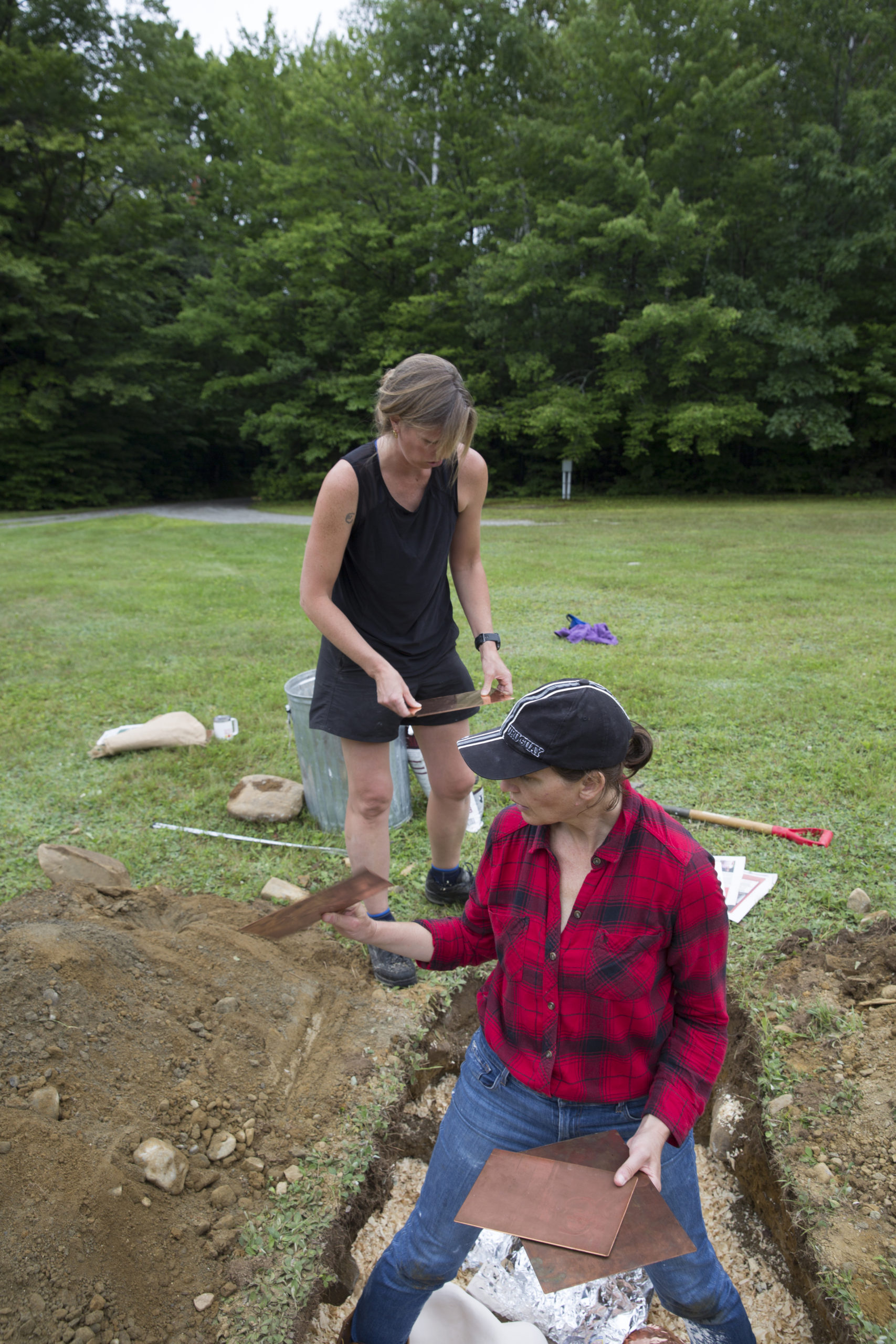
Fire pit preparation, Skowhegan, Maine
In the current show, you make a specific architectural intervention into the space. Could you please describe it, and does it function as you expected it would?
I built a raised plywood floor that is fifteen inches above the existing floor; so as soon as you step into the space you are on this construction grade subflooring. In doing so, I wanted to immediately activate the viewer and make them aware of their own presence in the space as a participant. The choice to raise the floor was based on my wanting the ceramic pieces to be in dialog with the photographs without isolating them on pedestals. So really in the show you are standing on a kind of platform pedestal, with the sculptures.
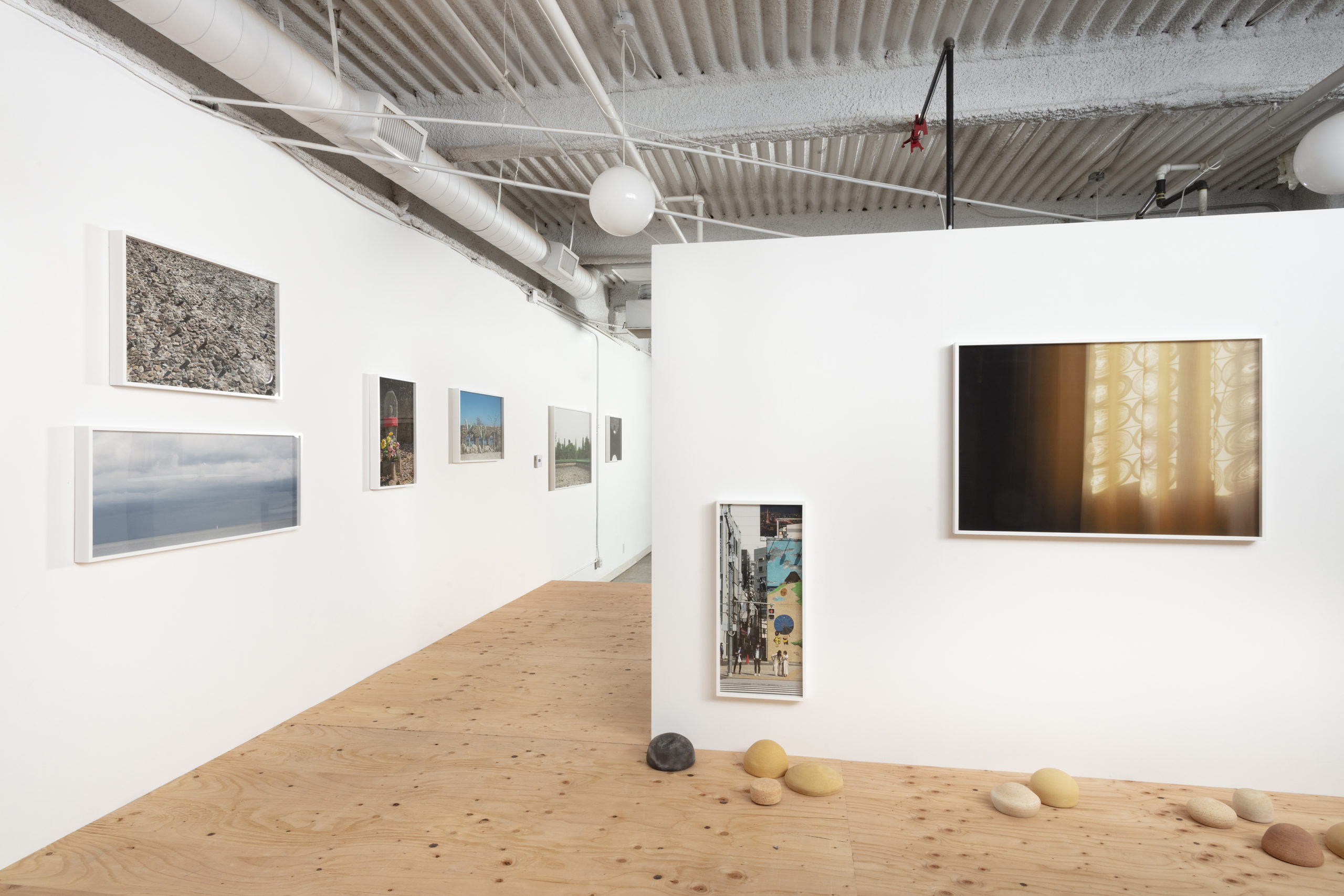
proximity at FOYER-LA, photo by Josh Schaedel
I found the pairing of the ceramics and photographs (and the triangulation with the raised floor) brought out a different sense of each medium and its material potential. Was that the dialog you wanted to produce? What was the experience of working across these media in preparing for the show?
These photographs were collected over a few years, then selected, worked on, and printed; whereas the spheres are made on a potter’s wheel. When I’m working on those, I’m looking down; I’m pulling clay into an open cylinder and then I’m closing the cylinder on the wheel; so what I look at, what I see in the process, I then obscure. I often weirdly wanted to get inside the spheres when I was making them. In fact, not until the end of the process, until I installed the show was I okay with being outside them. They are very private, intimate, enclosed, like a hidden secret in a physical form. They have this presence—like children. But the photographs are of another time and space. And the floor brings it all together. The floor creaks; there is a give; it is hollow underneath (a trapped space which in some ways mirrors the sculptures). There is a question of access in the photographs as well. What happened in the spaces around the image, or in the time prior or after the image—these are hidden secrets too.
The color of the vessels is similar to that of the floor and at times they seem to float. I also chose to hang the photographs low, more towards the height of the actual floor, so it shifts a response, maybe to your gut rather than your head. Their position on the walls has this intuitive weight for me. Similarly, the orbs were originally hand-held and then I wanted to make them larger so it was almost like you had to hold them in your arms.
Just a few of the orbs are black, and this seems to represent a slightly different process.
Yes, these are a bit of a tribute to Skowhegan where a few of us got together and did a pit firing. Used banana peels, coffee grinds, used tea bags, sodium, copper and silver coins were all wrapped around the sculptures in tinfoil and we then threw them into the fire in the pit. It was interesting in terms of community. We had to dig a hole almost like a grave; it took a few of us (some of whom were just digging to help for a bit). Then we built a fire and we placed our work in the fire and we would have had to tend to it and watch it all night, but we ended up covering the hole with a steel plate, which probably caused the excessive blackening, because we got the fire really hot and it didn’t have a slow build up or cool off. For me it was helpful to have to let go of any expectation. I’ve learned in general as an amateur ceramicist to let go of any attachment, to let go of the preciousness that comes out of object making. And last summer I was also letting go, as so many of us had to do on so many levels in the past few years. Some vessels broke in the fire; some broke being shipped back to LA. I felt they really needed to be present for the show. They bring that fire into the show.
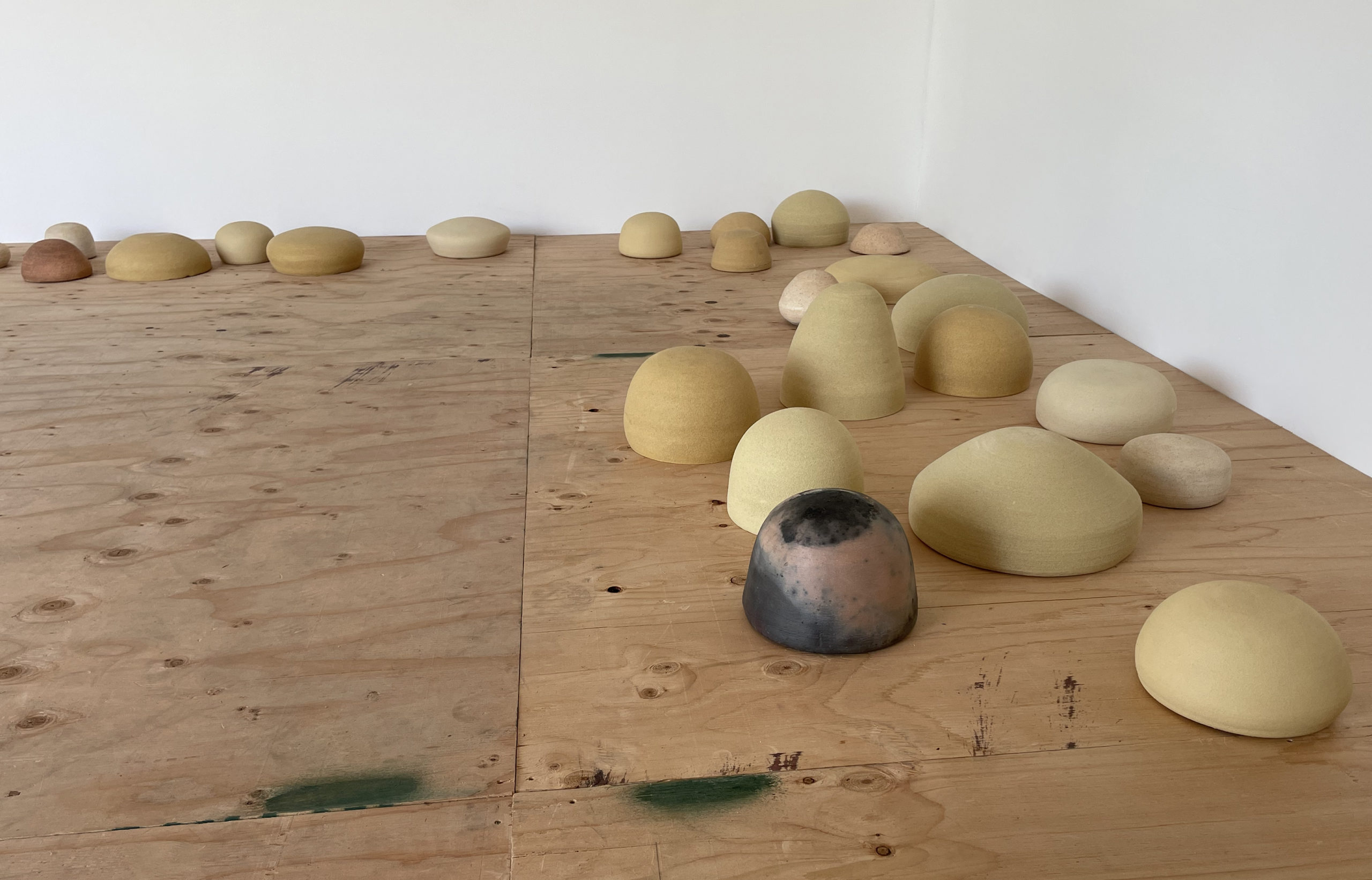
proximity—detail at FOYER-LA
The photographs in the series cover a lot of geographic ground, which was so poignant on the heels of our shared global lockdown. First please tell me your thoughts about travel in your practice; and then in turn, how did the pandemic affect your conception of the show?
I intentionally chose not to title the works to give any sense of where the images are from. They are also cropped tightly and don’t give much of an indication in the image either. It was not to be vague and abstract, or to try to disassociate the viewer’s desire to locate or know. I think it’s just about a moment; they feel to me to be about a spatial moment. On the long wall I played with the possibility of a larger implied narrative between the images—reinforcing the tension or support in the images through the placement of the images in relation to each other horizontally and vertically; so that the weight of a vertical stone wall is metaphorically the tension within a stormy sky.
I never know if the moments I photograph are going to lead to a piece. Initially I didn’t see the photographs and the sculpture together but then I realized I was doing the same thing in both of them. I also thought the series was going to be more ongoing; but the pandemic and Skowhegan helped me come to the formulation of this project; the isolation of the pandemic and the isolated time at Skowhegan away from daily life brought the show together.
You said that the photographs are about a spatial moment—is that moment one of proximity from the title of the show?
Yes. I have been thinking about proximity and how little we all have experienced beyond our immediate family or friends these past two years. I am interested in both a physical proximity and an emotional proximity and how it involves a certain present-ness.
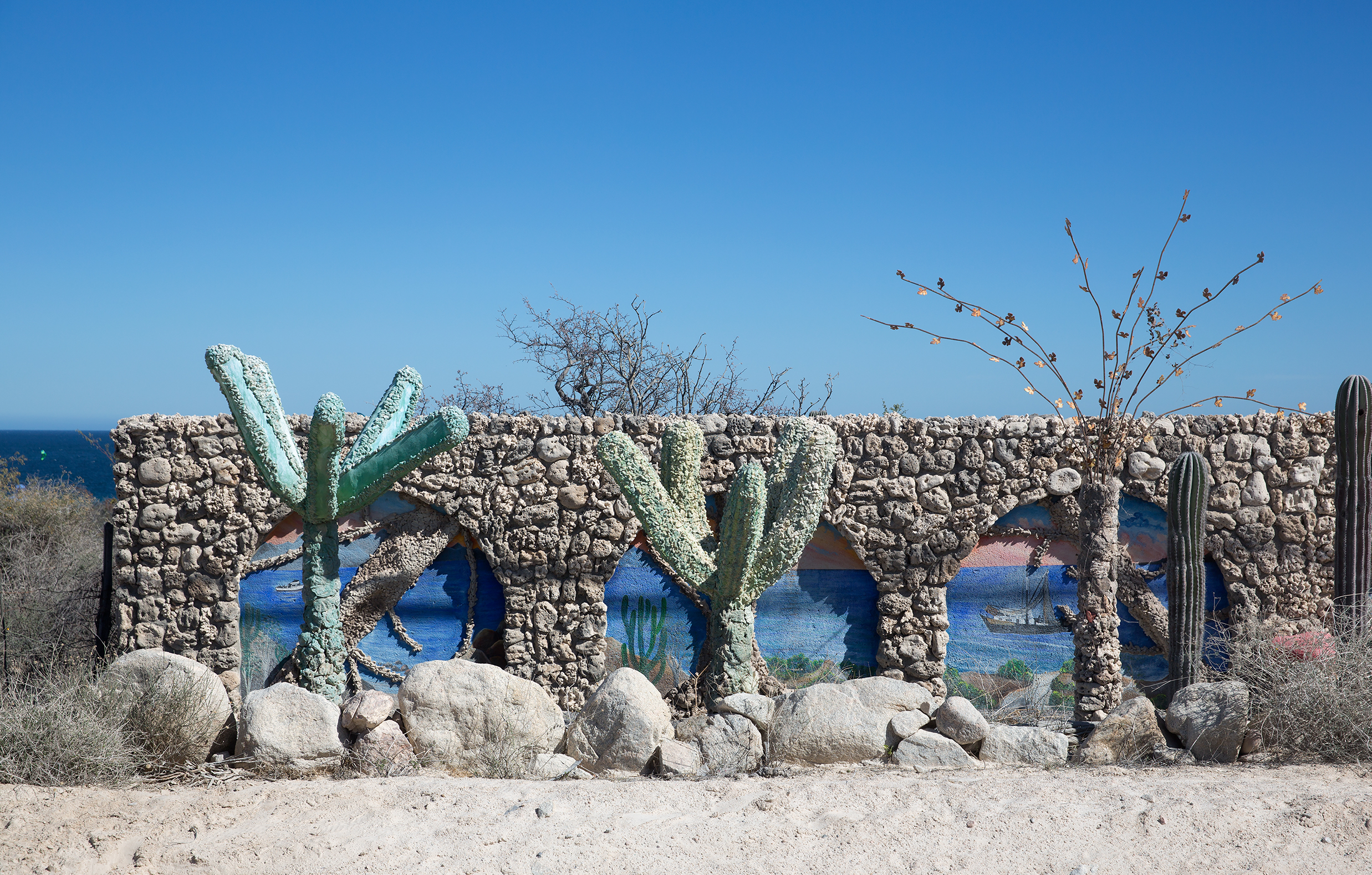
proximity—untitled 13 at FOYER-LA
Do we want to hold these moments in our hands like the spheres? Because I really want to hold those spheres.
I think you want to access the moment; I think you want to get in there, to locate oneself. Maybe the scale and presence of the sculptures—and sharing the space with them—helps slow things down a bit. I see them kind of settling us all a bit, and then you “sit” with the images.
Can I ask you about parenting? There are these vessels which you briefly related to children; you mentioned a daughter reading poetry in FOYER-LA; there is a boy in one of the works who I happen to know is your son, next to your daughter. I know you traveled with your children. You obviously aren’t hiding this content, but it’s not foregrounded either: how does it figure in your sense of your practice now?
Most of the photographs were taken when I was traveling with my children; but I think the preciousness of that documentation is only evident to me in hindsight now. It wasn’t that I was trying to capture an experience with them—they usually aren’t visible in the images except the one you mention. I chose to include that image (my daughter with her back to the camera and my son in the background in soft focus on the flooded streets of Venice) hesitantly. Maybe it was private—maybe a kind of tribute to them and to the weird phenomenon of the streets of Venice being flooded. But I think it clearly depicted what these other more abstract, more formally considered images are doing: my daughter is moving forward yet away; the two figures are separate but connected through the viscosity of the water; the corridor is tight; and I guess for me it feels like interconnectedness across distance no matter what. It is a metaphor for their relationship as well as what is happening in the show.
Well that in of itself is a bit different than what we might expect from highly produced postwar photography that often seems to organize world into a series of untouchable spectacles and typographies. How do you relate to that history?
The images are not for me a representation of a specific place. They are material for the possibility of connection. Often in the images it feels like some sort of intimacy just happened or maybe is about to take place. There is the residue of a possible exchange—a disoriented cushion, flowers to be appreciated, a couch to lie on.
I agree, some of the photographs are sculptural; and the floor, framing, and hanging insists upon that even more. Why do you think you turn to photography in your sculptural practice?
While in the studio at Skowhegan I listened to a lot of recordings of past artists’ lectures. In one of them Roni Horn spoke of presence being more than what you see. Does presence involve the suspension of time? I think about how time sometimes feels like it has stopped when you are with a good friend, or experiencing nature, or whatever it may be. I think I’m trying to create a site for connection, for momentary presence.
That reminds me of the way you described FOYER-LA at the beginning of our conversation.
Yes—a space to move through, a place where you transition. It is an experiment to share with an audience that hopefully becomes a community.